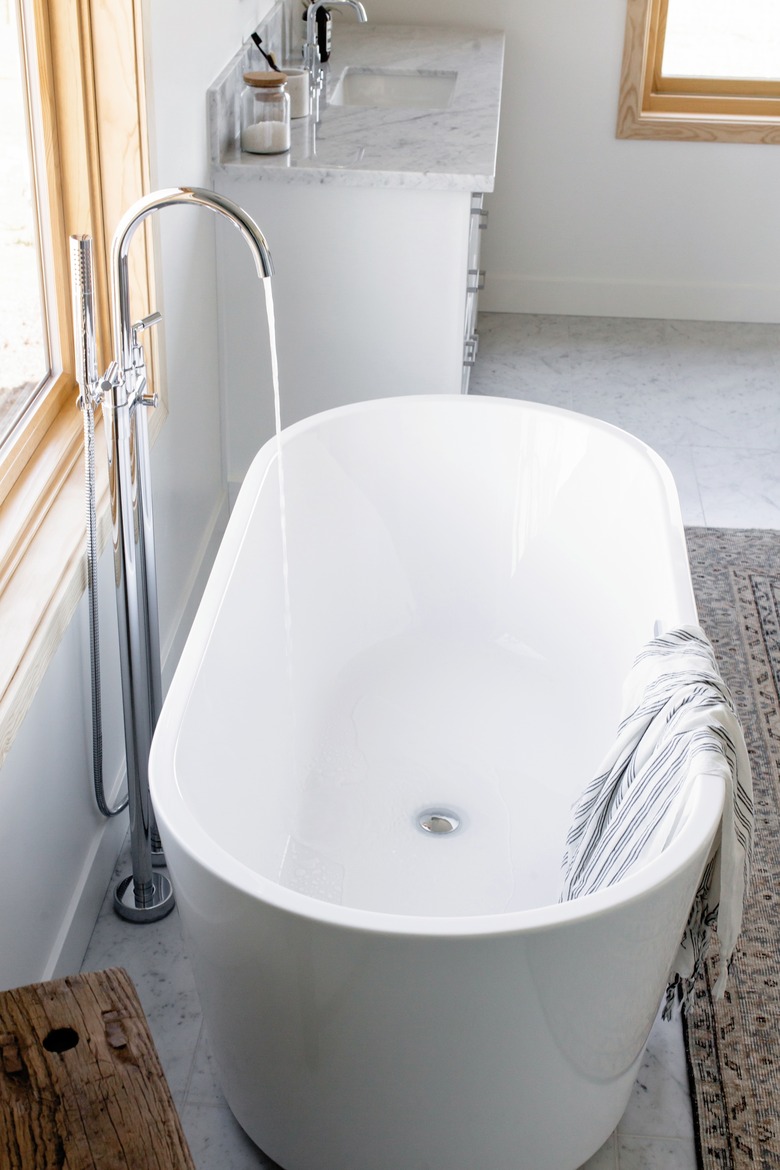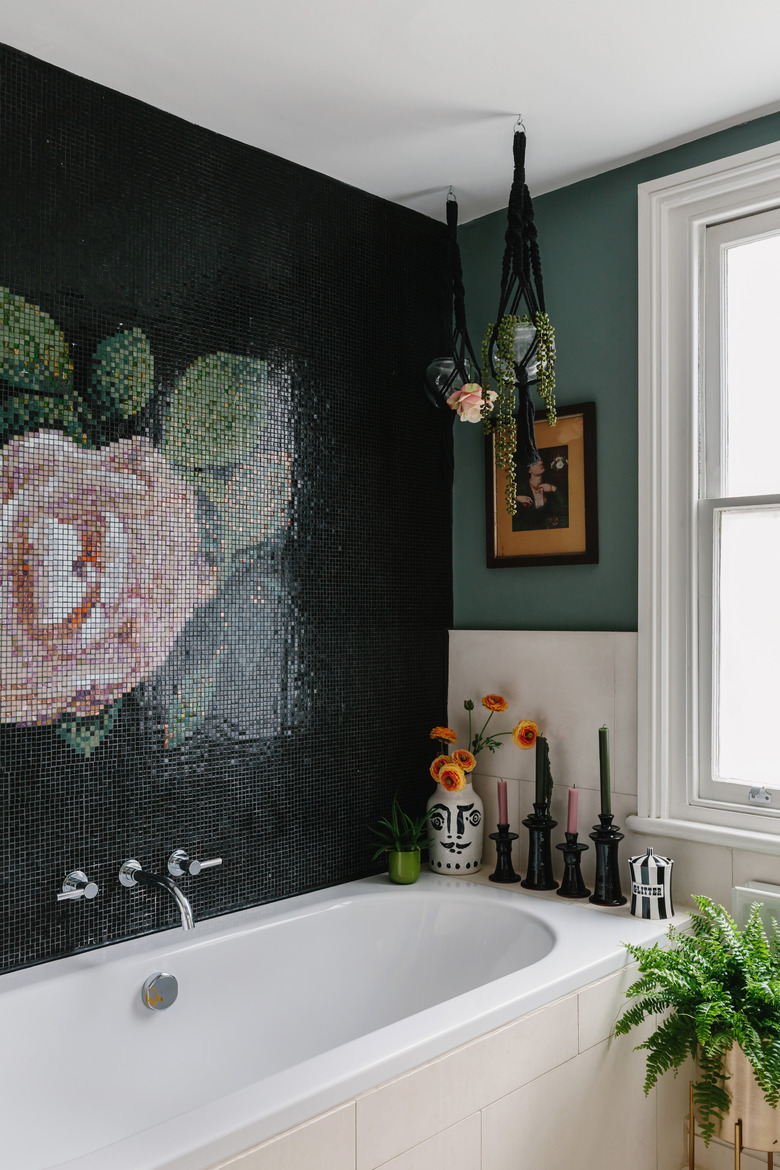Bathtub Drain Location: Right, Left Or Center
There are a lot of things to consider when purchasing a new bathtub, and one of the most important is the bathtub drain location. You can select either a right-hand or left-hand model, which just means that the drain hole in the bottom of the tub is on the right or left side when looking from the entry side of the tub. Depending on how your drain and vent pipes are run, selecting a bathtub with the correct drain location is a very important decision.
There are also centered drain tubs, which, as you can guess, have the drain in the center of the tub. You can also find tubs with reversible drains, which are found on drop-in-style tubs that can be installed facing to the right or the left; the drain itself is not reversible, but the tub direction is. Bathtubs come in many shapes, colors and sizes and are manufactured in a variety of materials ranging from fiberglass to cast iron. No matter what color or shape you chose for your remodel, you'll need to be sure that the drain is in the right location.
How a Tub Drain Works
All bathtubs drain in basically the same way, with a drain assembly located on the bottom of the tub linked to an overflow that may or may not have a toggle switch. When the plunger or stopper is opened, water drains out of the bathtub, through the drain assembly, down a tailpiece and into the trap. All plumbing fixtures in a residence are required to have a trap, which remains full of water and acts as a seal to prevent sewer gasses from entering the residence.
The water runs through the trap down a pitched drain pipe, eventually connecting to the main drain pipe to run out of the building. A vent pipe is connected to the drain pipe to allow air into the system while also allowing gases to escape. Without a vent, the drain won't work properly. Along with being an important part of the tub drain system, the vent can be the trickiest part to install.
Tub Style Choices
Bathtubs come in several different styles, each with their own pros and cons. An alcove tub has walls on three sides with open access from the front, while a corner tub is set in the corner of two adjacent walls. Freestanding tubs are fully exposed, often with some of the piping showing, while drop-in and undermount tubs are set inside a premade deck with the pipes hidden inside the deck. The wooden platforms for undermount and drop-in bathtubs can be built as freestanding or set against a wall or corner.
Choosing Your Bathtub Drain Location
When doing a remodel, the location of your tub drain will usually determine the necessary location of your new bathtub. This is because relocating drain and vent lines, not to mention water pipes, can be expensive and not possible in some cases. The vent will need to be located within a certain distance from your tub drain, usually 5 to 8 feet depending on the rules of the local building authority. In many situations, this (along with having the proper amount of pitch in your drain pipe) can be a deal breaker when considering the option of relocating drain pipes.
According to Fine Homebuilding, alcove tubs can be either right or left hand, while the drain location on freestanding, corner, undermount and drop-in bathtubs can be either right hand, left hand or center. If part of your remodel is going from one style of tub to another — an alcove to a drop-in, for example — the plumbing will need to be rerouted, which is a big job. If you are simply removing an old tub and installing a new but similar-style tub, the bathtub drain location should stay the same.
Determining the "handedness" of a tub is simple: When you're facing the tub as though you're getting into it, a right-hand tub has the drain to your right, and a left-hand tub has the drain to your left.

